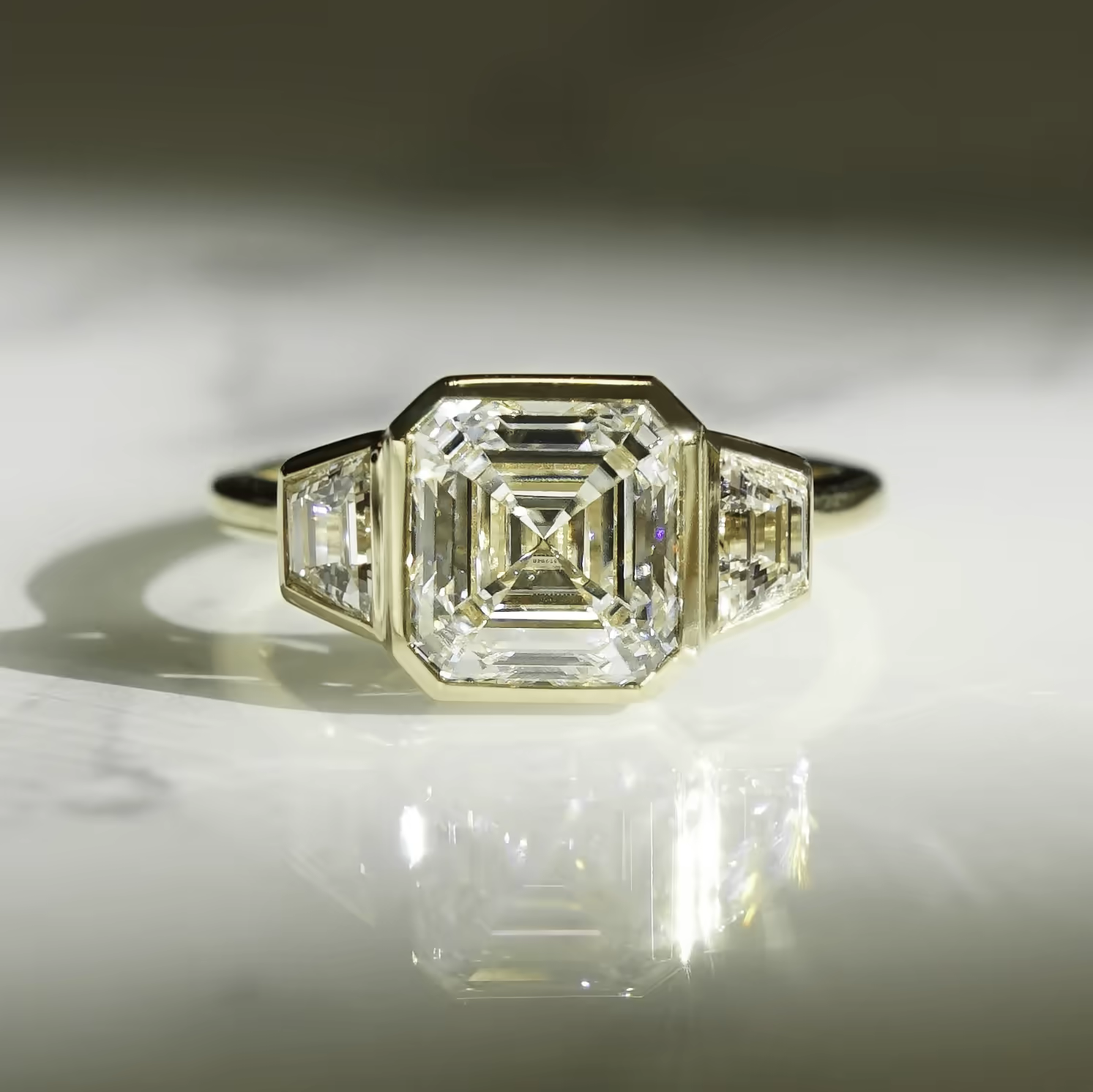Shop for Asscher Cut Engagement Rings
CHUNKY DECO GOODNESS •
Asscher Cut

Engagement Rings
Art deco daydreams. Channel your inner Great Gatsby in these Asscher Cut Engagement rings.

CHUNKYDECOGOODNESS•CHUNKYDECOGOODNESS•CHUNKYDECOGOODNESS•
CHUNKYDECOGOODNESS•CHUNKYDECOGOODNESS•CHUNKYDECOGOODNESS•
1Select your setting
2select your Stone
3CONFIRM
filters
- METAL
sort :Recommended
Recommended
close filters
Stone Shape
OvalEmeraldRoundRadiantPearAsscherMarquiseCushionElongated CushionPrincessOld EuropeanOld MineRose CutTrillion
Stone Profile
Style
Collection
Stackable
Metal
TRY AT HOME
Recommended
Best Selling
Newest
Price: High to Low
Price: Low to High
Frequently asked questions forAsscher Cut Engagement Rings
Absolutely, yes. We're all about this super Art Deco-y shape, what with it's geometric outlines and kaleidoscopic sparkle. The Asscher cut is what we call a step cut, meaning it has elongated, concentric facets instead of facets that radiate out from a center point. This gives it a unique style that stands out, and can look super modern but also looks fantastic in a vintage style engagement ring setting.
Technically speaking, nothing. And even a diamond listed as an Asscher cut will say "square emerald cut" on its certification. This is because the original Asscher cut diamond was the world's first patented diamond cut, created by Joseph Asscher in the early 20th century. But the family's patent expired during WWII, making the cutting pattern up for grabs by the general public. While the style is still called the Asscher cut, they are no longer patented or regulated, and instead are really just square emerald cuts. Hence, one in the same.
Asscher cut and emerald cut diamonds are very similar. They are both step-cut diamonds, but emerald cuts are elongated with a rectangular outline while Asscher cuts have a square outline, or 1:1 length-to-width ratio. Both shapes have clipped corners rather than points. Asscher cuts, with their even proportions have more of a kaleidoscope sparkle, while emerald cuts have more elongated facets and a larger table, giving them more of a flash effect. But both are sparkly and have fantastic fire — that rainbow flash diamonds are known for.
While round diamonds are the most expensive diamond shape, Asscher cut diamonds are one of the most expensive fancy shapes on the market. Asschers only make up about 2% of diamonds available today. This relative rarity means that finding a really great Asscher cut within your budget can sometimes be tough to tackle. Not that it can’t be done. But one of our favorite money-saving Asscher shortcuts is to shop lab grow Asscher cut diamonds. They can save you nearly half the cost, and even be created to spec, which means if you’re looking for a specific shape, size, or cut pattern, it’s never out of the question.
Fun fact about Asscher cut diamonds — they make really great use of a diamond’s natural shape and carat weight, i.e. less rough diamond is lost during the cutting process. The downside is that this results in deeper cut stones, which retain more carat weight (and thus more value for the manufacturer) but also hide that carat weight from the face up view. Asschers can tend to look a bit smaller than other shapes and stick up a bit higher on your finger. Basically, you can end up paying for diamond weight that you can’t see. And that’s not a good look on anybody.
















